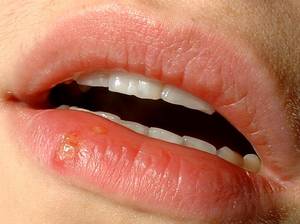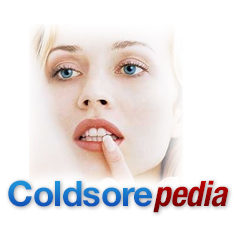 Herpes simplex virus type 1, or HSV-1, is a human retrovirus that attacks the skin and mucous membranes, producing blisters and sometimes other symptoms. The virus most commonly attacks the area around the mouth, but it can sometimes manifest around the eyes, on the hands, or in the genital area.
Herpes simplex virus type 1, or HSV-1, is a human retrovirus that attacks the skin and mucous membranes, producing blisters and sometimes other symptoms. The virus most commonly attacks the area around the mouth, but it can sometimes manifest around the eyes, on the hands, or in the genital area.
The virus has outbreaks that last about a week, after which the symptoms disappear and the virus retires to a dormant state in the victim’s nerves near where the outbreak took place (typically the nerves of the face). The herpes virus is found throughout the world and is widespread throughout all human populations.
Almost everyone has a certain limited resistance to the virus and in nearly all cases it is not considered a serious or life-threatening illness. It does however produce symptoms that can be uncomfortable and annoying.
HSV2
Another type of herpes simplex virus, herpes simplex virus type 2, or HSV-2, produces symptoms similar to those of HSV-1 and is the more common culprit when the symptoms appear in the genital area. The two strains are genetically distinct but the symptoms are essentially identical. It’s also possible for the genital lesions to be produced by HSV-1 rather than HSV-2, although the latter is more commonly the case.
Contagion
HSV-1 (and also HSV-2) is highly contagious. It’s estimated that virtually the entire population is infected with HSV-1 by the age of ten. The prevalence of HSV-2 is less widespread. Contagion is possible only when the virus is in an active phase, producing and discharging copies of itself, particularly in the presence of open lesions. Transmission occurs from direct contact with lesions themselves, and also by indirect contact, e.g. drinking from the same cup or glass as a victim of the virus. The virus cannot be transmitted during its dormant phase.
Genital herpes, especially when caused by HSV-2, is considered a sexually-transmitted disease (STD). Sexual intercourse with an infected person suffering from an active outbreak is the primary way of transmitting the disease, although it is not the only form of contagion.
Dormancy
Between outbreaks, the HSV-1 virus retreats into the nerves and evades the body’s immune system by means of chemically misdirecting it. The virus is capable of surviving for a protracted time in the body through this method. During dormancy, the virus infection produces no symptoms and the victim is not contagious.
Symptoms
The symptoms of HSV-1 are usually strongest during the initial outbreak of the disease. The outbreak begins with a tingling, itching, or burning sensation in the area where the blisters will later appear, usually in the area of the mouth. After a day or so of this, clusters of small blisters appear on the skin. The blisters rupture, discharging a fluid that hardens into a scab-like crust. The crust is shed and re-formed several times over the next several days. After an average of seven days, the blisters disappear and the virus returns to the dormant state.
The initial outbreak of the disease may be accompanied by fever, headaches, nausea or vomiting. It is also possible for more severe symptoms to occur in patients whose immune system is compromised for one reason or another. Also, the virus (either HSV-1 or HSV-2, although the latter is of greater concern due to the usual location of the outbreak) is especially dangerous to newborn infants. A pregnant woman carrying the herpes virus, especially with genital lesions, is monitored for active outbreaks during delivery and if an outbreak is occurring at that time, a C-section delivery is indicated to eliminate the chance of infection. The virus cannot be transmitted to the fetus while it remains in the uterus, so the only concern is an active outbreak during delivery itself.
After the initial outbreak, not all herpes victims ever suffer another. In victims who do experience recurring outbreaks, later outbreaks are normally less severe. In both cases, this is believed to be due to the body’s immune system “learning” how to fight the virus, although it is unable to do so while the virus is dormant.
Treatment
As of this time, the only treatment for herpes is symptomatic. A number of prescription antiviral medications can shorten the duration of an outbreak if taken as soon as the first symptoms appear, i.e. before the blisters form. If the outbreak is accompanied by pain, analgesics (e.g. aspirin or ibuprofen) can relieve the discomfort. Topical ointments can do the same for about half an hour at a time.
There is no cure for HSV-1 or HSV-2. Once acquired, the disease remains throughout life, and repeated outbreaks can occur at any time. It isn’t a serious illness in most cases, and almost never causes death or serious health problems, but there’s no getting rid of it.
 Herpes simplex virus type 1, or HSV-
Herpes simplex virus type 1, or HSV-